One of the places that several people recommended we visit while in Baltimore was the National Aquarium. Having now been, I can see why it came so highly recommended.
The National Aquarium is in the Inner Harbor and so was only a 10 minute walk from the Hyatt Regency where we were staying (here’s my review of our hotel stay).
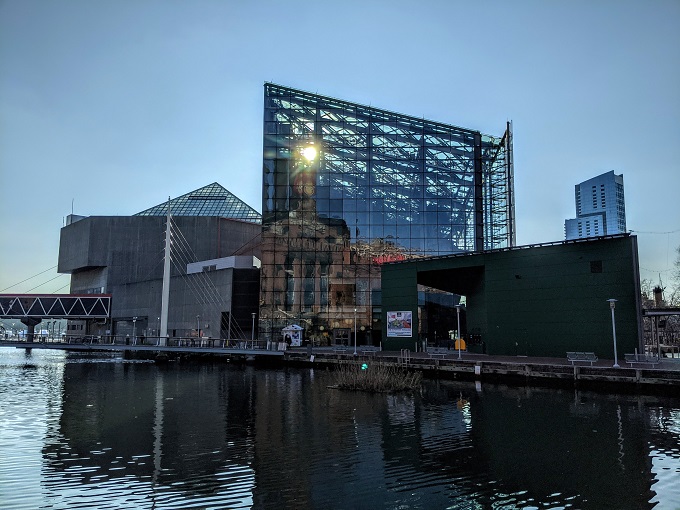
We visited in December 2020, so during COVID times. The National Aquarium was therefore taking various precautions for the safety of both visitors and staff. First off, they were selling timed tickets, so we purchased those online a day or two before we planned to visit, although I’m assuming you can buy them on the same day.
All visitors had to wear a mask throughout their time there and they checked our temperatures when entering. We were running a few minutes late for our timed slot, so I was glad that the fact we were a little warmer from rushing there didn’t cause any issues with that!
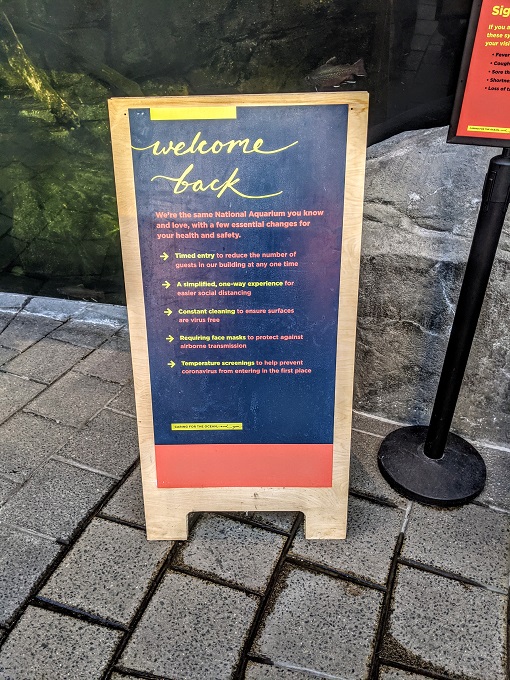
As we entered they had cute marine-themed signs encouraging social distancing.

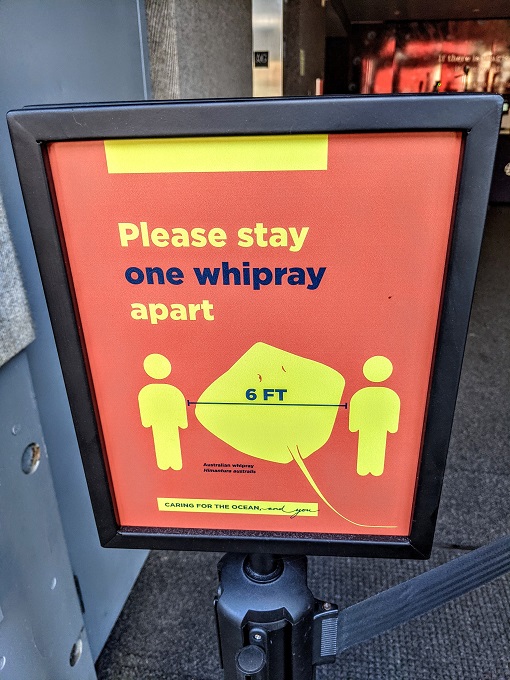
They’d also adjusted the layout of the aquarium, implementing a one-way route around the attraction to help ensure certain areas didn’t get too crowded.
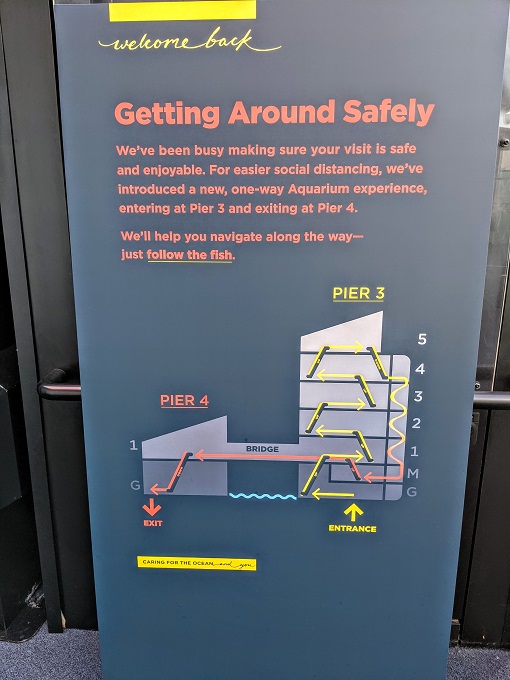
The aquarium has an impressive entrance, with a large waterfall greeting you.
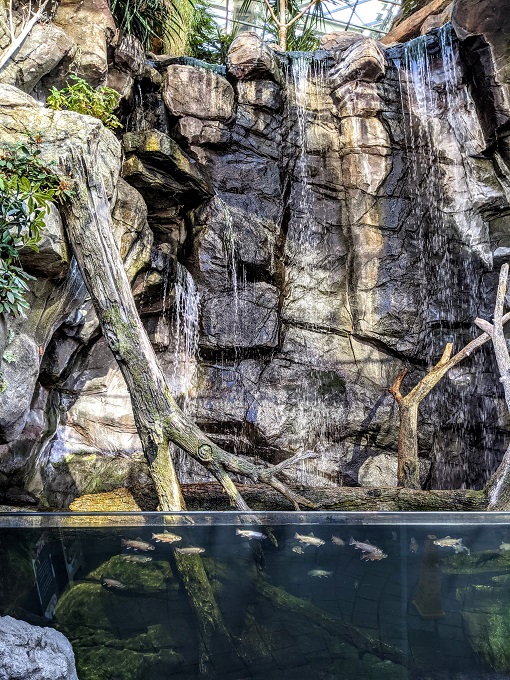
The large features don’t end there as next up there are some megalodon jaws. You can get a photo op standing behind them, although there was a barrier around them preventing you from sticking your head through; I’m not sure if that’s due to COVID or if that’s always there.
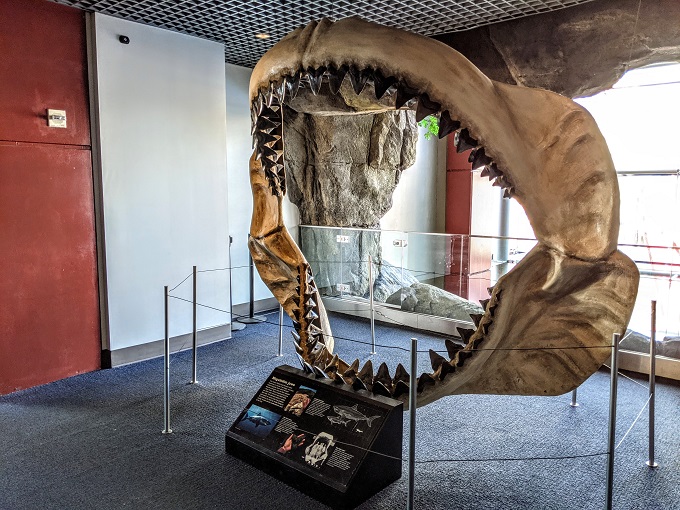
The route then takes you above the waterfall you saw when entering.

The National Aquarium has various zones featuring marine life from different regions and habitats around the world, one of the first of which was Australia.
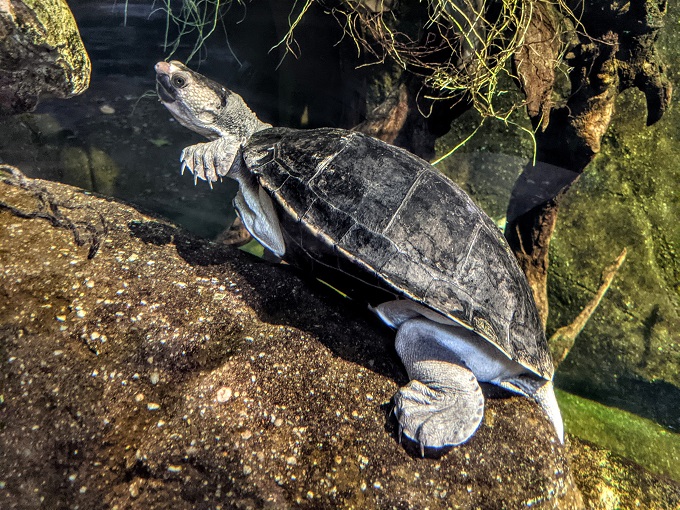
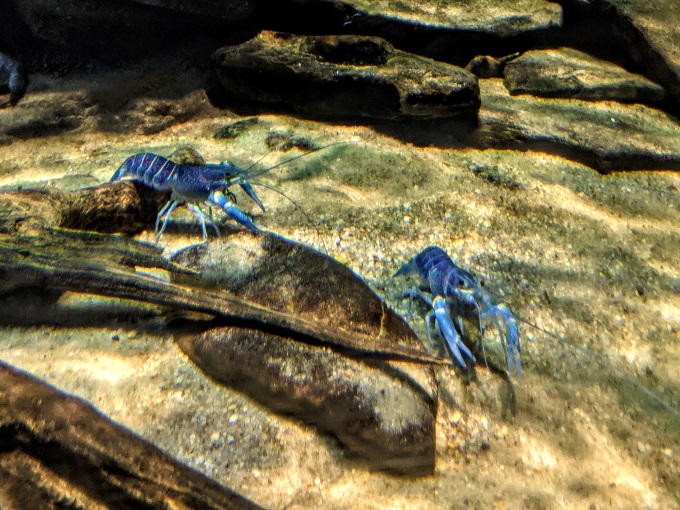
Plans for the National Aquarium began in the 1970s as the city wished to redevelop the Inner Harbor, with the aquarium finally opening on August 8, 1981.
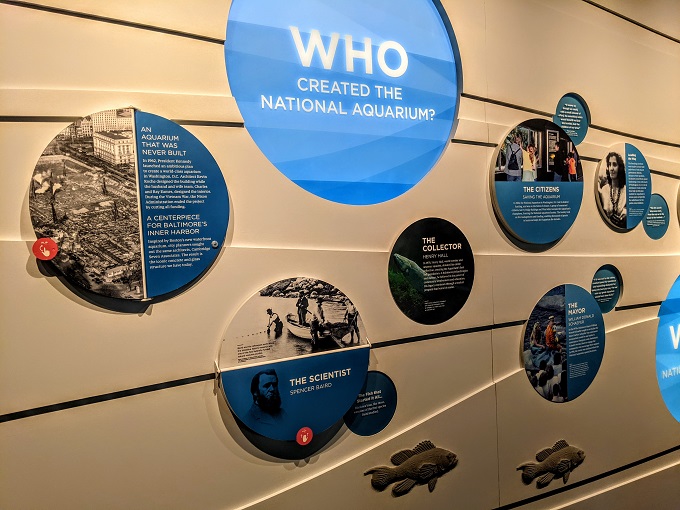
The next exhibit is Blacktip Reef, a large reef recreation with all kinds of marine life. One of the most interesting was the Australian whipray which gets its name from its whip-like tail which can be up to three times its body length.
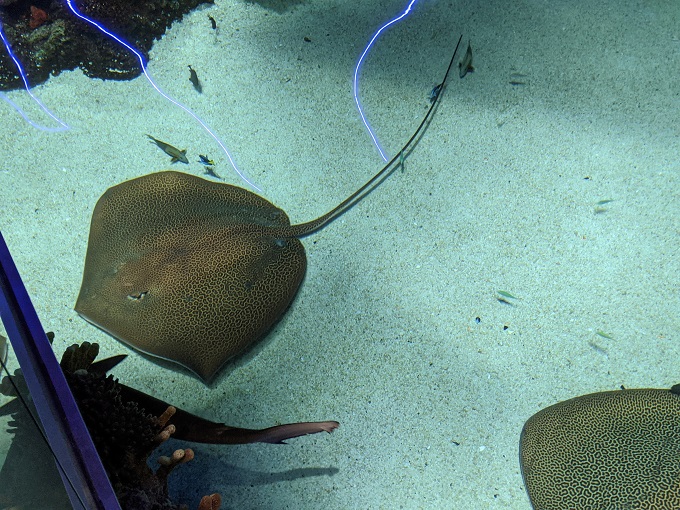
When arriving at the aquarium, you can get a personal, sterilized stylus so that you can use the touchscreens without needing to use your fingers. The Blacktip Reef area had several touchscreens so that you could learn about all the different fish and other wildlife swimming beneath you.
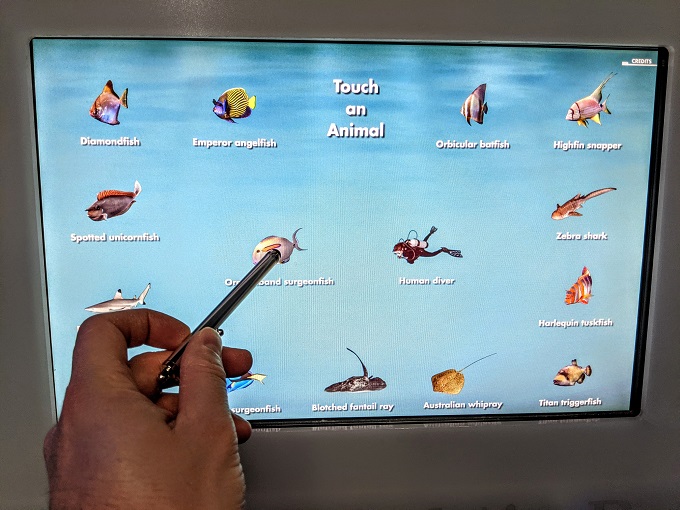
One of the aquarium employees pointed out something which I would’ve otherwise missed. Laying camouflaged in the corner was a tasselled wobbegong shark which, in addition to being the strangest looking shark I’d ever seen, is perhaps the creature with the funniest name I’ve ever heard.
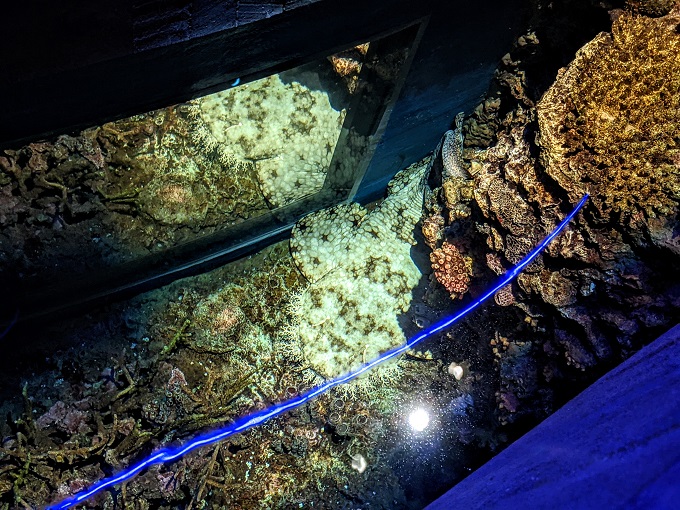
The next area featured marine life from Maryland. My favorite part from this area was a hermit crab exhibit with so many shells that it could probably move to a new home every day for a month.

Next up was a touch pool area featuring horseshoe crabs and rays. Unfortunately COVID has made this more of a ‘look pool’ area instead, primarily because all the hand sanitizer from people’s hands would contaminate the water.

We loved this part of the aquarium thanks to the two employees working in that section that day – Kyle and Hannah. Kyle was in charge of the touch pool section and shared all kinds of interesting information, such as the fact that horseshoe crabs aren’t actually crabs. They’re closer to spiders or scorpions, although horseshoe crabs aren’t arachnids either – they’re arthropods.
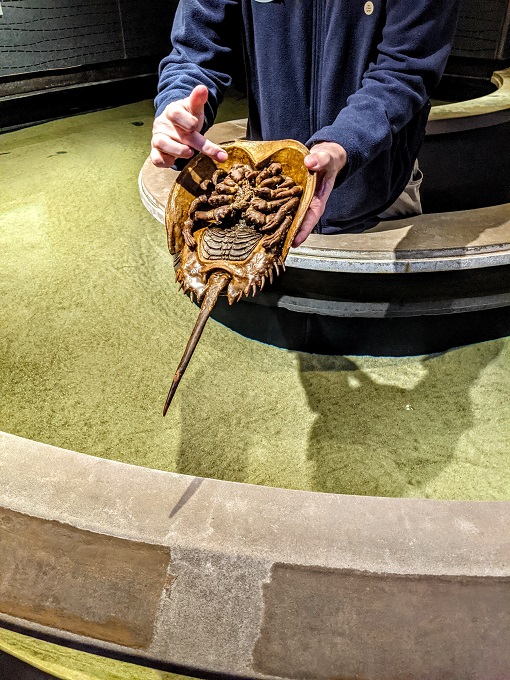
Next to the touch pool was an exhibit featuring moon jellyfish which is where Hannah was working. She also shared some fascinating information about them, such as the fact that the loops you can see are their stomachs. Their stomachs don’t light up – it’s just the coloring from the shrimp they’ve been eating and the light shining on their tank. Most of them have four stomachs, but some have three and others can have up to six stomachs.
Some other interesting stuff we learned is that they’re about 95% water and that although they have a neuronal network, they don’t have a brain.
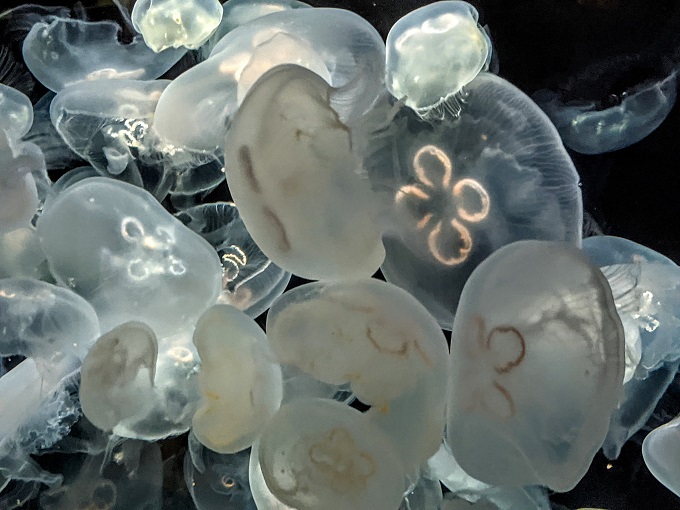
We really enjoyed chatting to Kyle and Hannah, but we couldn’t monopolize their time and so we moved on to check out the aquarium’s other exhibits.
The next area featured exhibits focused on how creatures had evolved to help them survive. For example, the alligator gar has long, fang-like teeth which enable it to both pierce and keep hold of prey which thrashes about.
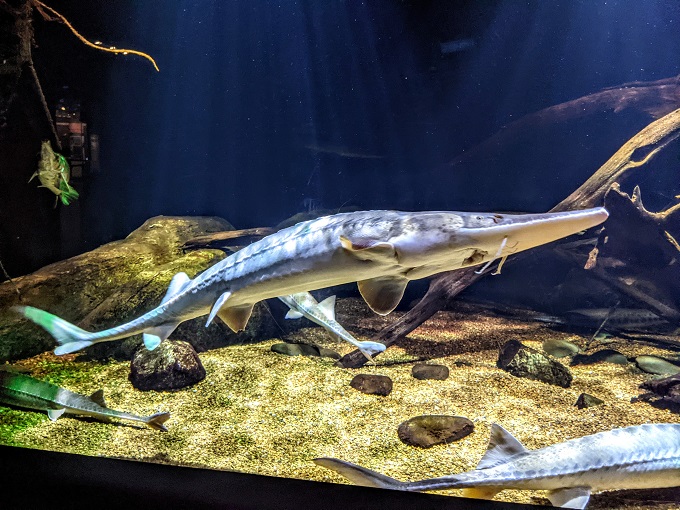
Another interesting exhibit was a tank containing urchins. Their natural habitat is recreated by a wave every 10-15 seconds or so.
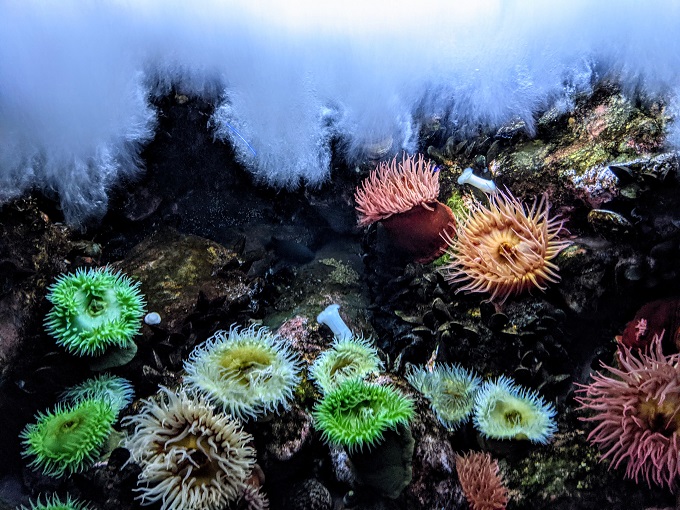
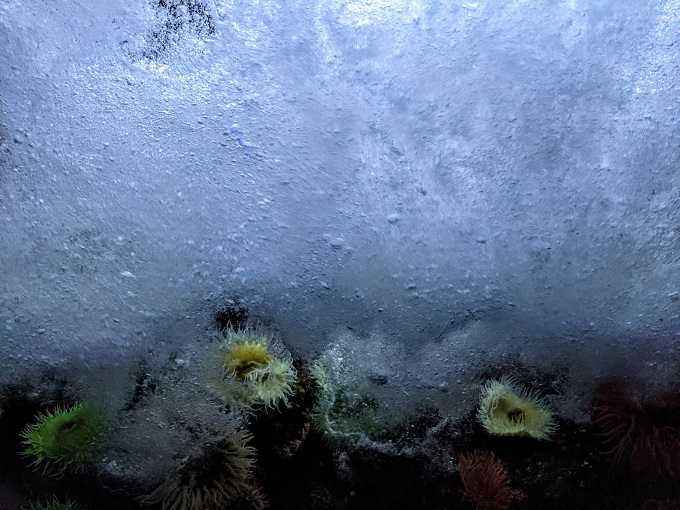
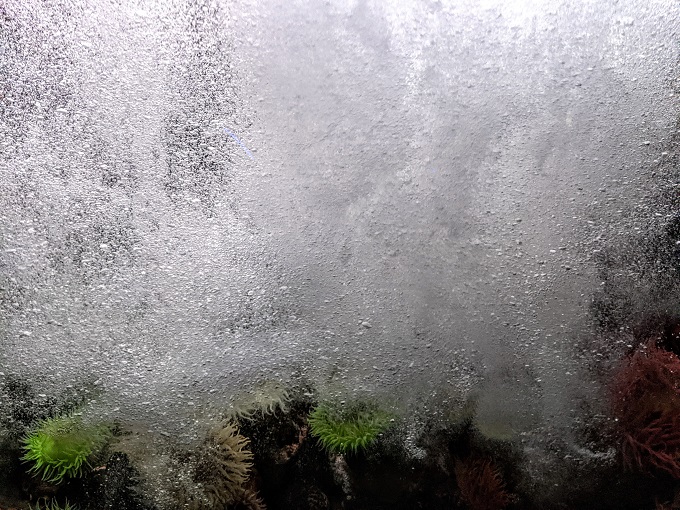
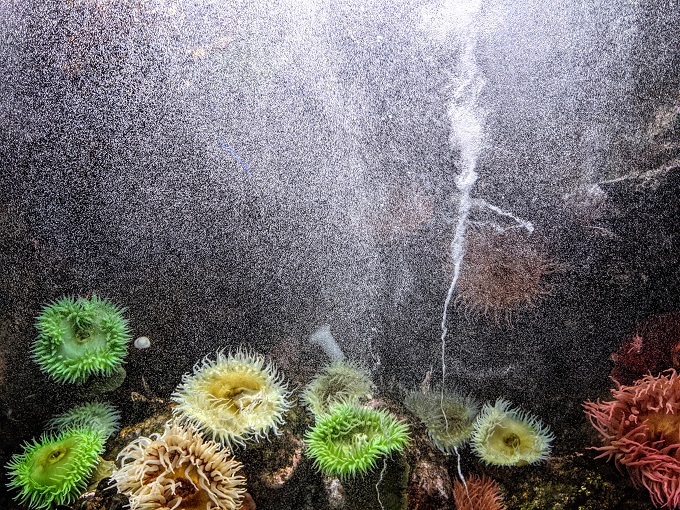
Seahorses can’t swim very quickly, so their long, tubular snouts help them slurp up prey as it passes by so that they don’t have to chase after it.
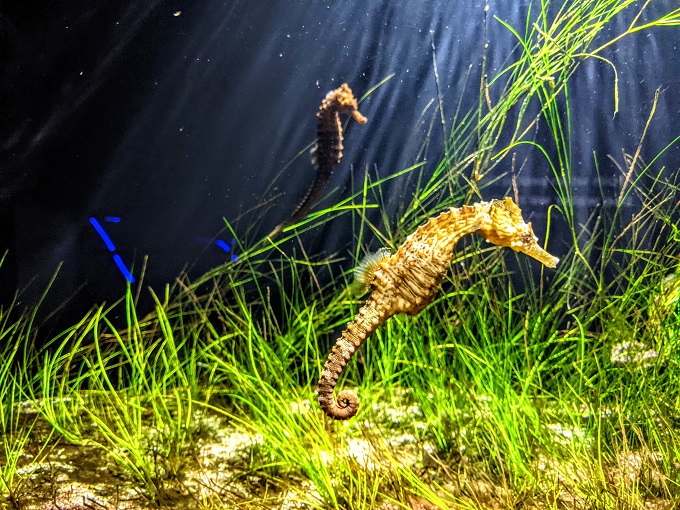
One of the coolest (but goofiest) looking creatures was the peacock mantis shrimp. This can be preyed upon, so to defend itself it digs a U-shaped burrow, hides inside and then punches predators with its club-shaped limbs.
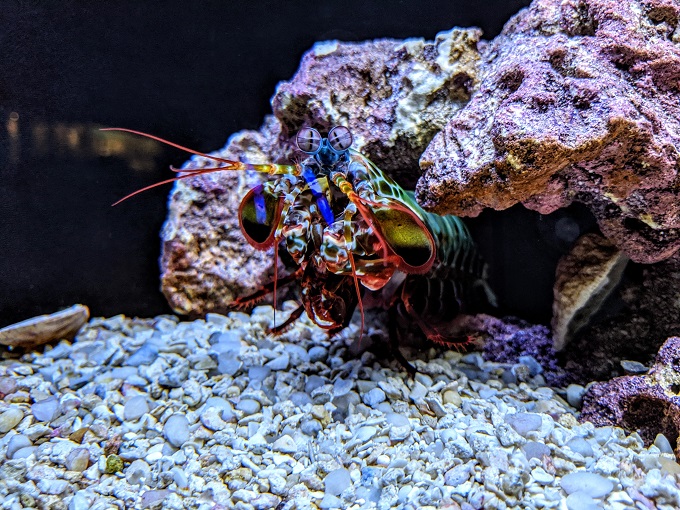
Pineconefish are nocturnal and find prey using special organs which can be found on each side of its jaw. These fish have glowing bacteria inside which not only help provide them with light to see but can also entice prey to them.
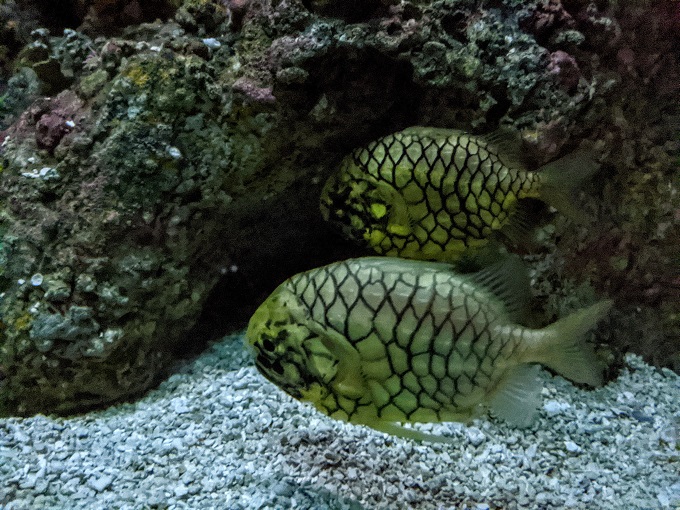
An Amazonian rainforest was one of the next habitats in the aquarium.
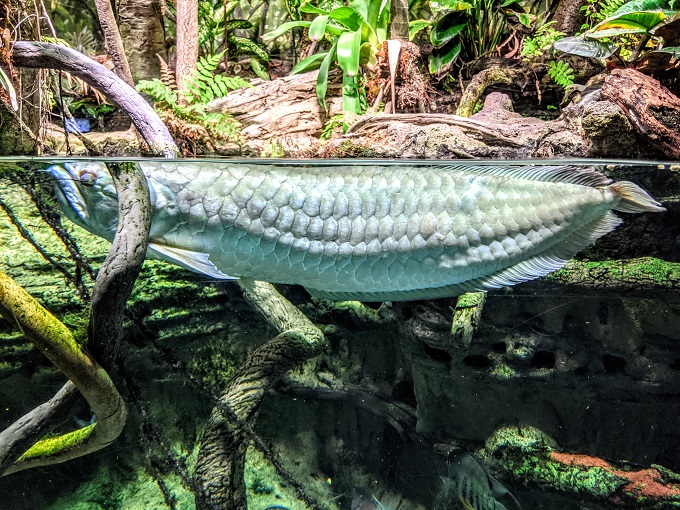
A leopard cactus pleco was dancing back and forth against the glass as though it wanted to entertain us.
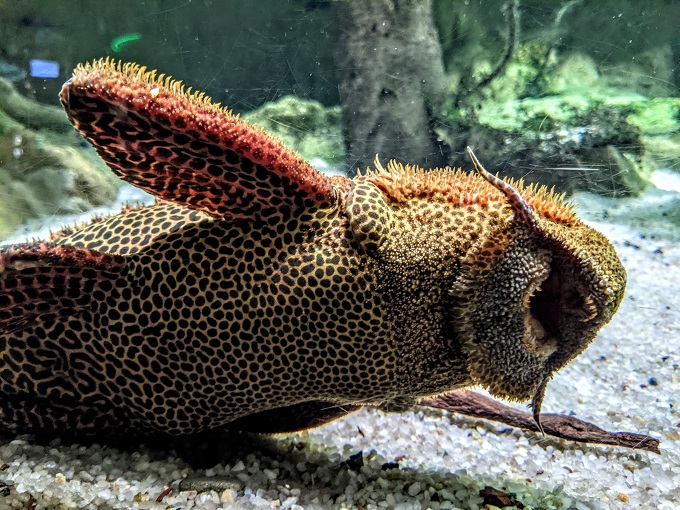
The Amazonian rainforest area also had some colorful frogs, but the fact that they’re dyeing poison dart frogs means you probably wouldn’t want to kiss them.
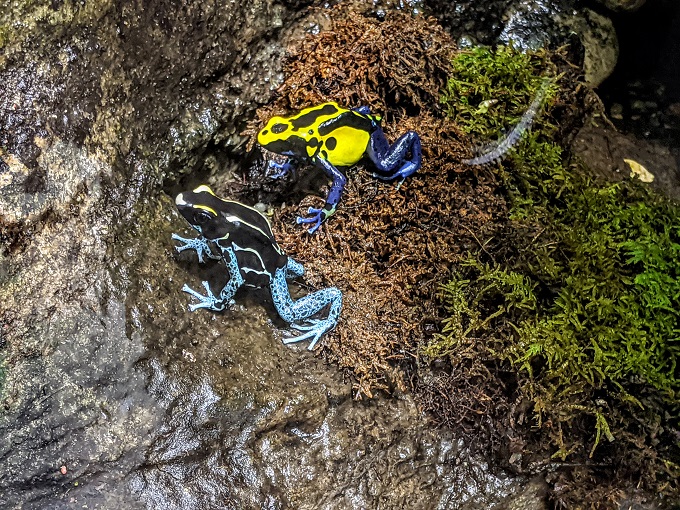
We then headed through to Shark Alley which is what we thought was the end of the aquarium.
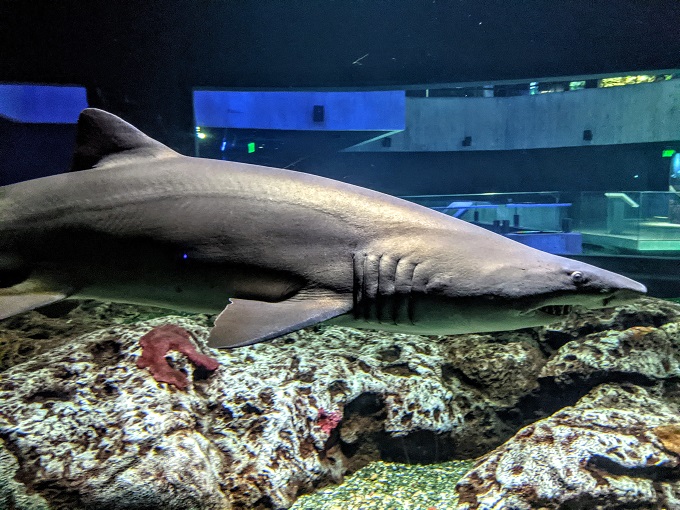
It turned out that wasn’t the end and that there’s a whole separate section of the aquarium with even more exhibits. To get there, you head over from Pier 3 to Pier 4 by way of an enclosed bridge with all kinds of interesting facts to read along the way.
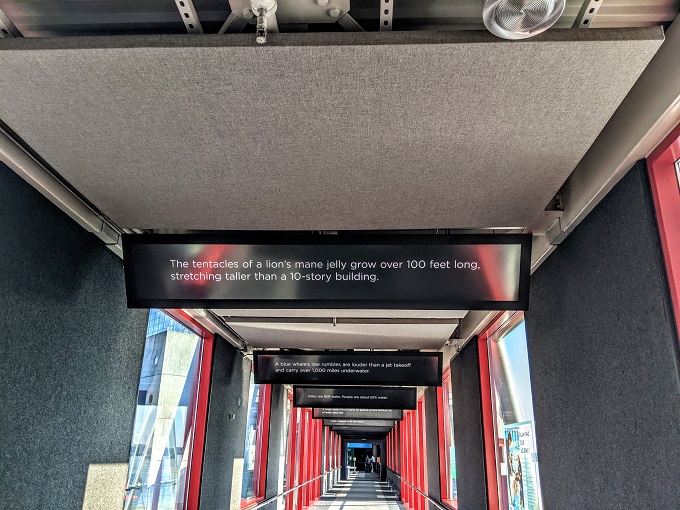
One of the main exhibits in Pier 4 features jellyfish, with a hanging jellyfish display greeting you when you arrive.
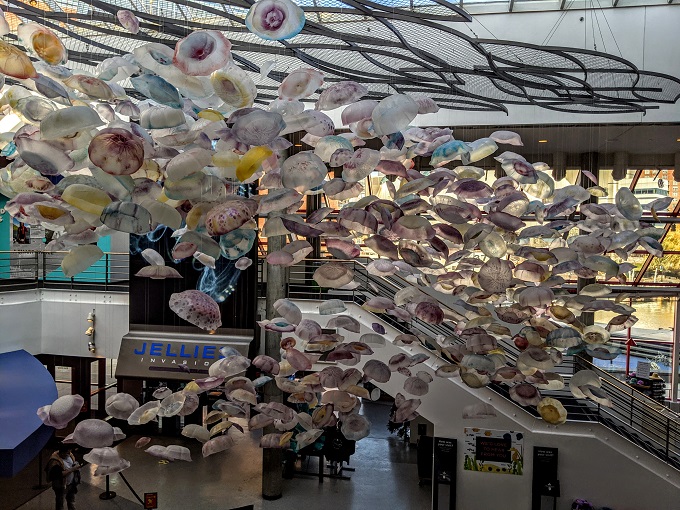
Before you get to the jellyfish though, there’s a large dolphin pool. They used to provide dolphin shows but not anymore; I’m not sure if that’s a temporary change due to COVID or if it’s a permanent change.
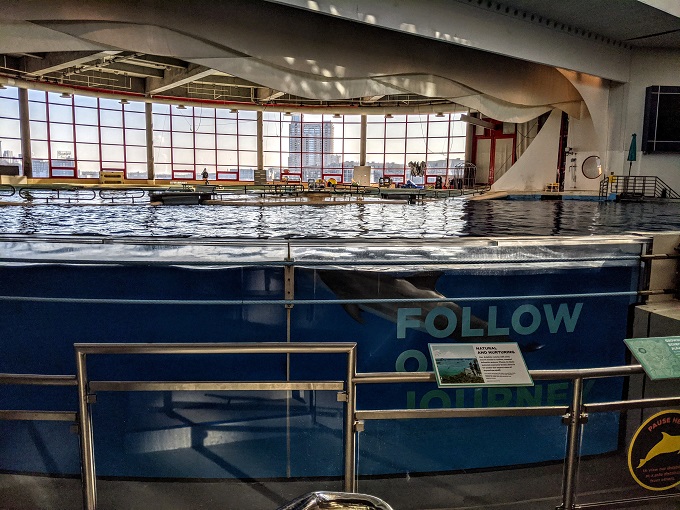
You can still watch the dolphins swimming around in the pool though.
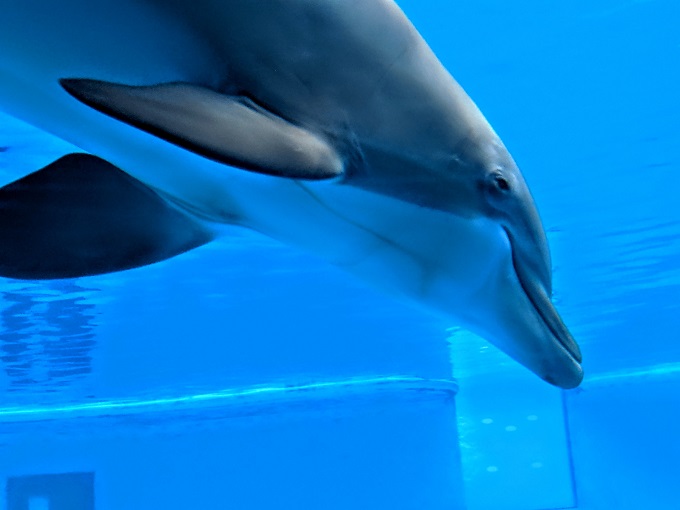
We got to see Hannah again from the earlier moon jellyfish exhibit as she came out with a replica dolphin skull to teach us more about dolphins.
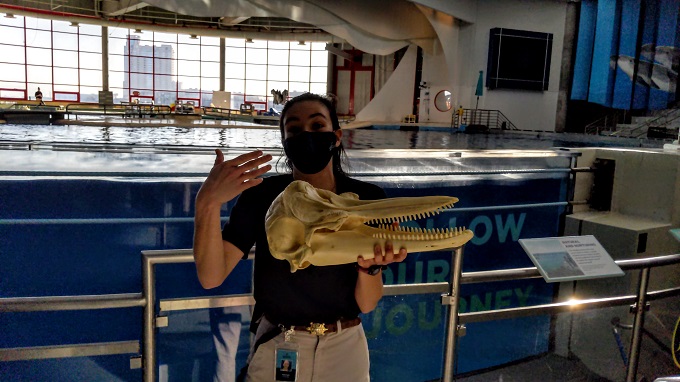
The final part of the National Aquarium featured an extensive jellyfish exhibit. I’d never found them too interesting in the past, but having visited the aquarium I’m far more fascinated with them now.

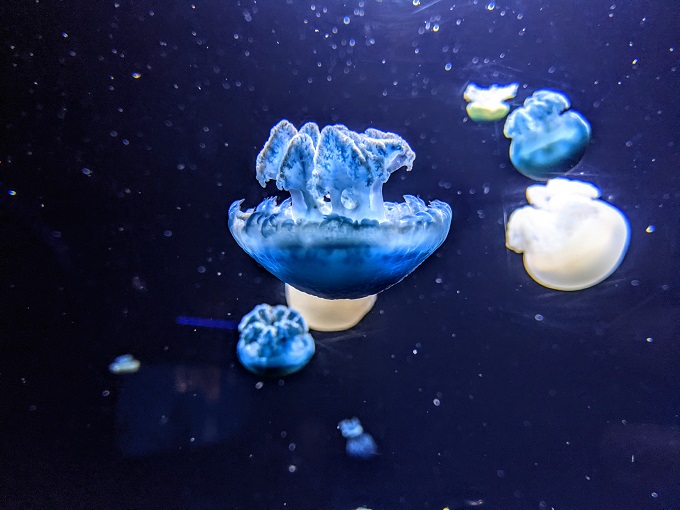
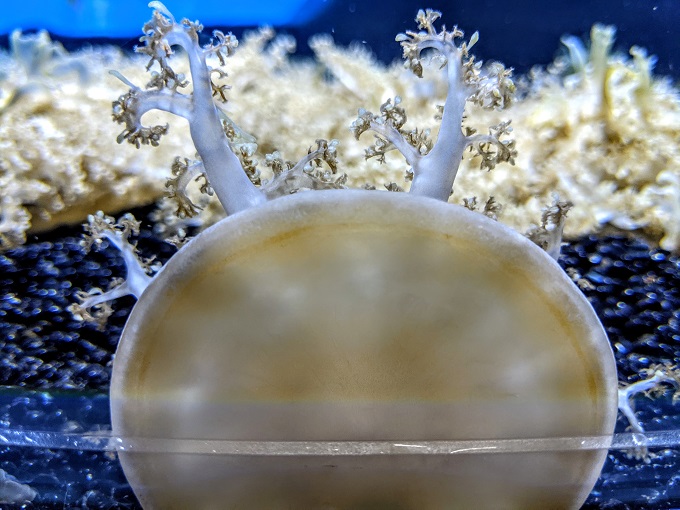

I’d never appreciated how many completely different types of jellyfish there are.
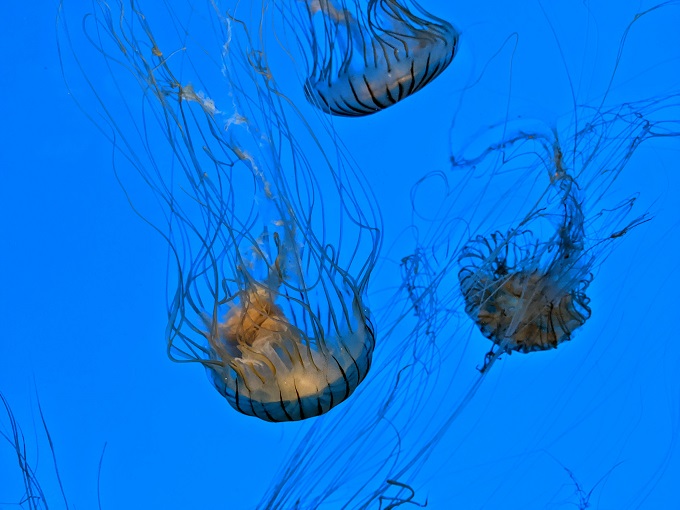
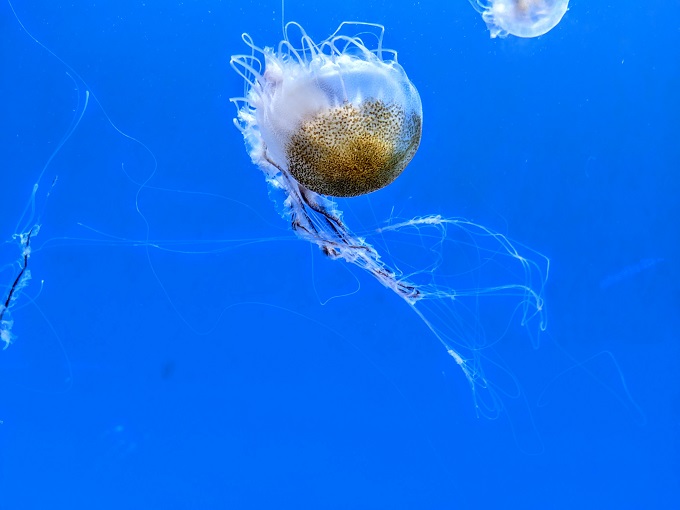
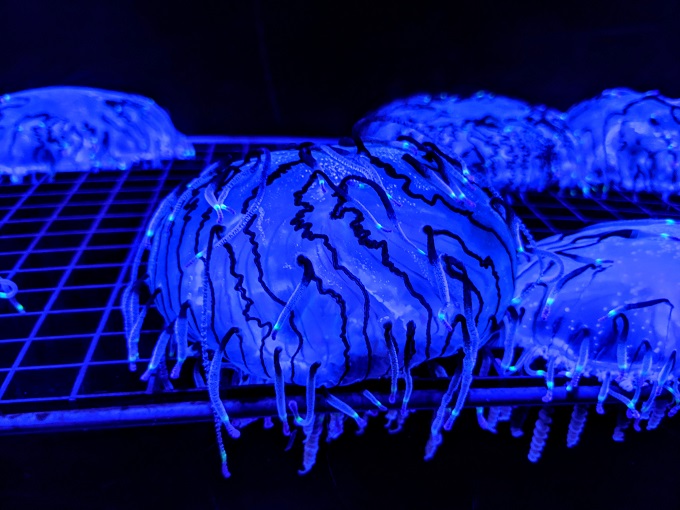
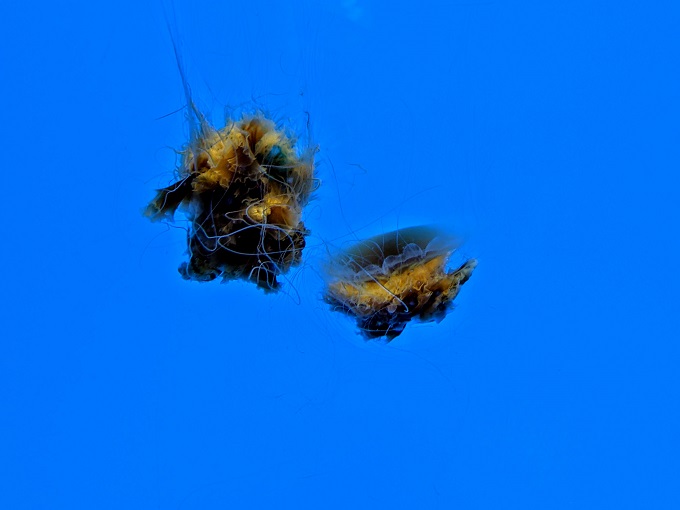
Final Thoughts
Shae and I both loved visiting the National Aquarium in Baltimore, Maryland and can see why it came so highly recommended. There was a great mix of habitats with just the right amount of information to be read without it feeling so overwhelming that it’s impossible to take it in.
We enjoyed it far more than the Georgia Aquarium in Atlanta. That aquarium was basically a series of giant ads for companies like Home Depot and Southwest with a few fish thrown in for good measure, whereas the National Aquarium in Baltimore placed a focus on what an aquarium should focus on – marine life.
It also helped that all their employees seemed to be enjoying their jobs, with Hannah and Kyle in particular being fantastic at what they do.
Ticket Prices
The National Aquarium isn’t cheap as our adult tickets cost us $39.95 each. Senior (65+) tickets are $34.95 and children’s tickets (3-11) are $29.95. Those prices are fairly steep, especially if you’re visiting as a family. Provided you can afford it though, the price is definitely worth paying as it’s an excellent aquarium.
If your budget is a little more limited, the aquarium offers half-price tickets on Friday nights after 5pm year-round. They close at 8pm, so that gives you three hours to walk around if getting there right at 5pm. We spent three hours at the aquarium when visiting and that seemed like just the right amount of time to see everything.
Address
National Aquarium, 501 E Pratt St, Baltimore, MD 21202
I so appreciate the detailed information about the National Aquarium.
Hope to see the jellyfish next time we are there.
Thanks, I’m glad you liked it 🙂